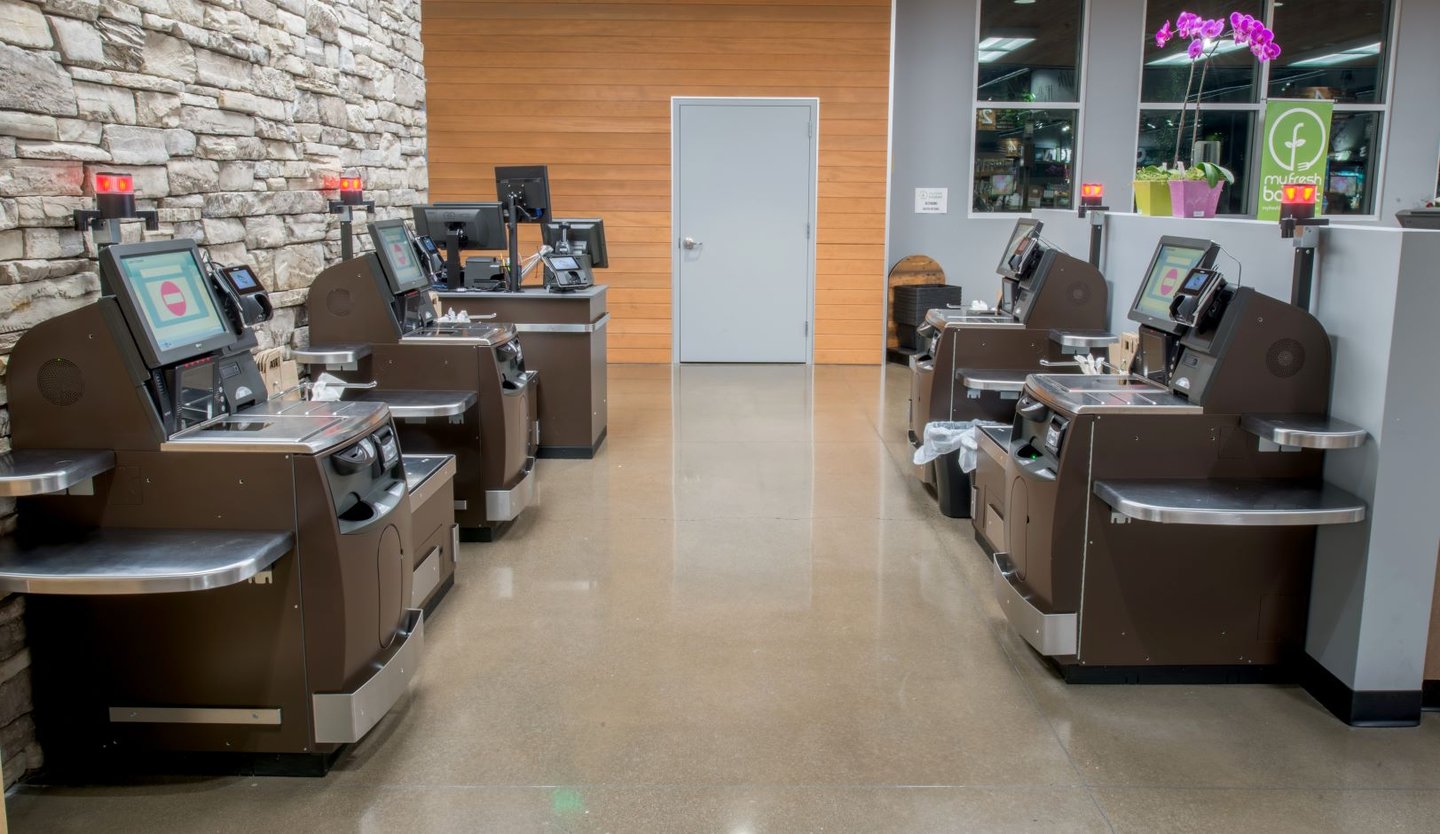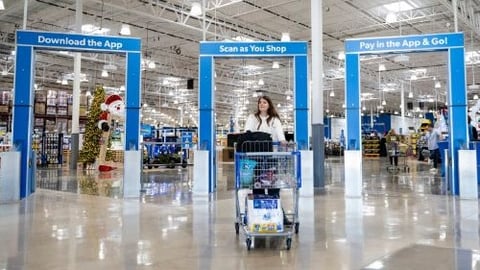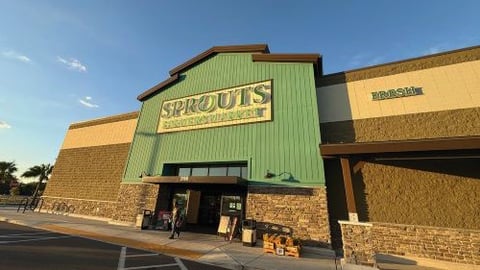The Future of Store Fixtures
Store fixtures are an essential component of any dynamic in-store environment. From reinforcing brand identity to highlighting specific merchandise, fixturing is a critical element of store design, and the latest innovations are making a big impact on the supermarkets of the future.
In a quickly evolving marketplace, retailers are increasingly depending on modular store fixtures to allow them to respond to shifts in customer preferences, seasonal trends and inventory changes. “Modular fixturing is on the rise in the domestic and European grocery sectors,” affirms Steven Duffy, SVP of design at Cuhaci Peterson, a Maitland, Fla.-based commercial design firm. Duffy notes that modular fixtures are particularly popular in the produce department, where sectional fixtures and orchard bins are frequently used.
[RELATED: New Merchandising Strategies for Bakery and Deli]
“Flexibility with produce fixturing is crucial for maximizing sales and ensuring that the product offering remains relevant to customer demands, seasonality and trends,” observes Jeff Cady, VP, produce and floral for Schenectady, N.Y.-based Northeast Shared Services, the main operating company of Tops Markets LLC and Price Chopper/Market 32. “The ability to quickly adjust or modify displays based on changing inventory, promotions or shifts in consumer preferences can make a significant difference in how well the produce department performs, from both a sales volume and shrink perspective.”
Tops uses mobile display vehicles for cut fruit in the summer, when the demand for fresh, ready-to-eat fruit is high. As the seasons change, Cady explains that those same cases “can be adapted to promote other items like seasonal produce, pre-packaged salads and even entire store meal solutions in the fall and winter.”
Display bins that can be easily repositioned or expanded to hold different sizes or quantities of produce are also used in Tops stores. “During the peak of summer, bins can be used for faster-moving seasonal items like melons or stone fruits, but in the fall, they can be scaled down and repositioned to focus on squash, apples or potatoes,” says Cady.
In the bakery department, Tops uses tables equipped with “drawers” on four sides. “This allows us to flex for the business, since the shelves expand the display space for holidays and Bills games and can be pushed in when not needed so we are not overexposed,” explains Karri Zwirlein, director of bakery, deli and prepared foods at Williamsville, N.Y.-based Tops.
Always in Season
Dan Phillips, owner of Langley, Wash.-based Food Market Designs, notes that flexibility is essential for his independent grocer clients catering to a customer base that expands and contracts with tourist seasons.
“Many of those stores do a big seasonal business, so they aren’t as busy in the winter months,” says Phillips. Those stores in particular need fixturing that’s flexible enough to handle seasonal crowds yet can be modified when the customer population shrinks. Stores that depend on showcasing local produce benefit significantly from modular fixturing such as orchard bins on casters, spillover bins and Euro tables. “Those are elements that can be moved around on the inside and also the outside of the store,” adds Phillips. “They can also be removed and stored when they aren’t needed. The last thing you ever want in a grocery retail format is an empty table.”
[RELATED: Store Fixtures Focus on Flexibility and Mobility]
Modular fixturing additionally allows supermarkets to swiftly adapt to seasonal changes in merchandising. “Most supermarkets use quickly adaptable gondola shelving they can adjust so seasonal merchandise [can] be displayed,” says Sean Unsell, associate principal and co-leader of grocery practice at Long Beach, Calif.-based RDC Architects. He notes that produce bin shelving can also be quickly reset to allow for seasonal products such as pumpkins or Hatch chiles.
Quick-Change Possibilities
To keep customers engaged and encourage exploration of the store, retailers are discovering the value of dynamic store layouts that can be modified frequently.
“Retailers want to set up different experiences within stores, such as a tasting area or a pop-up store within a store, whatever it might be to keep shoppers in the store longer,” asserts Kevin Kohler, VP, retail marketing solutions at Atlanta-based design agency Miller Zell.
“Grocers want to get new formats up and running and the store refreshed faster at the same time they are trying to minimize construction costs,” he adds. “We’re working with a grocery client on an installation process of rails and elements that are not attached to walls and features signage that can easily be switched out. This fixturing allows retailers to create different layouts within the store environment without having to do construction.”
With a totally modular environment, it becomes much simpler for a retailer to segment off one section to create a specific department, according to Kohler. Stores can expand or retract the space as needed. For example, Phillips created mobile checkstands for one grocery client that can be moved away from the front of the store in the off-season to make room for a coffee area in which locals can relax with a hot beverage near the store’s fireplace.
Kohler predicts that the pharmacy department will see some fixturing changes as supermarkets reimagine how the department fits within the store. Rather than placing the pharmacy at the side of the store, he suggests experimenting with the pharmacy at the center of the store, noting, “It would be a more holistic experience where the section ties into other departments.”
Increased Interest in Smart Shelving
Retailers are also ramping up investment in smart shelving, which uses a combination of technology (sensors, digital shelf labels, cameras and more) to automatically track inventory as well as to deliver personalized advertisements to consumers as they shop the store aisles and to collect shopper pattern insights. While balancing privacy concerns continues to be a challenge in this area, the benefits of the ability to amass shopper behavior data is a huge draw.
Smart shelving is still in the testing stage for most chains (Kroger has begun testing a solution with Microsoft that stores and processes volumes of data generated by customer actions on and around the shelves), but adoption is likely to increase. This is just the start of how AI-driven shopper data could drive fixturing design in the future. “Ongoing shopper data can help dictate gondola shelf height, which products should be on that shelf, even potentially product size,” says Kohler. “That could even tie into store layout.”
Focus on Sustainability
Sustainability considerations are also influencing the design of fixtures. As the use of hydrofluorocarbon (HFC) refrigerants is being phased out, Duffy notes that “grocers are working toward updating store systems and equipment.”
“We are thrilled with some of the innovations our clients are embracing with new refrigerated cases and systems,” says Unsell, whose firm works with ALDI, recently recognized by the EPA for its leadership in reducing refrigerant emissions.








